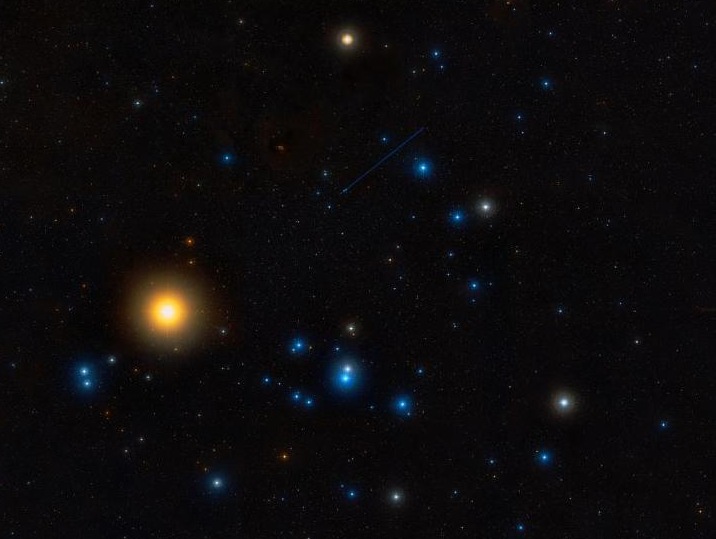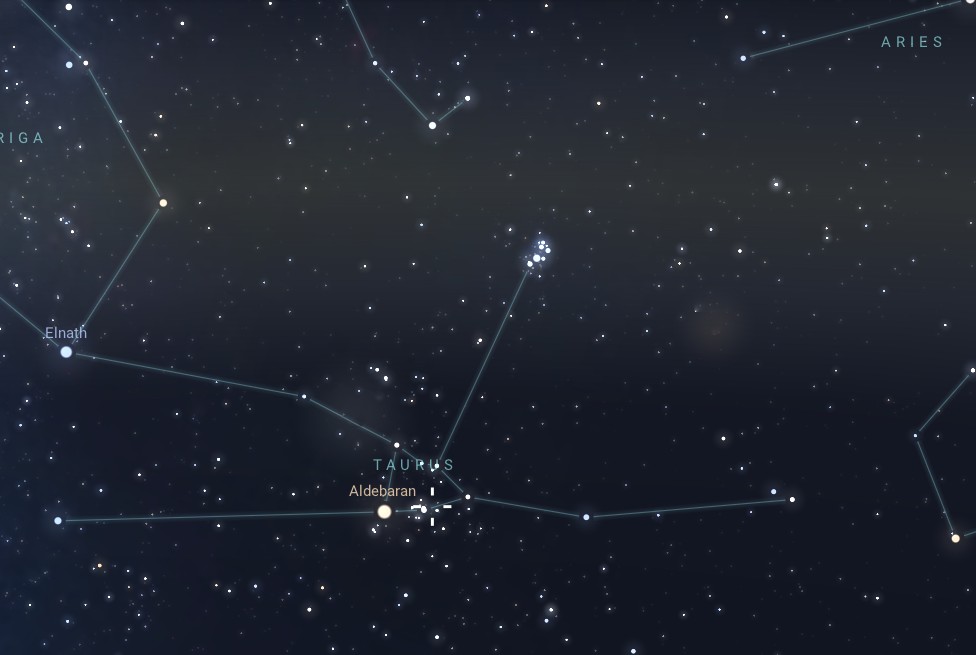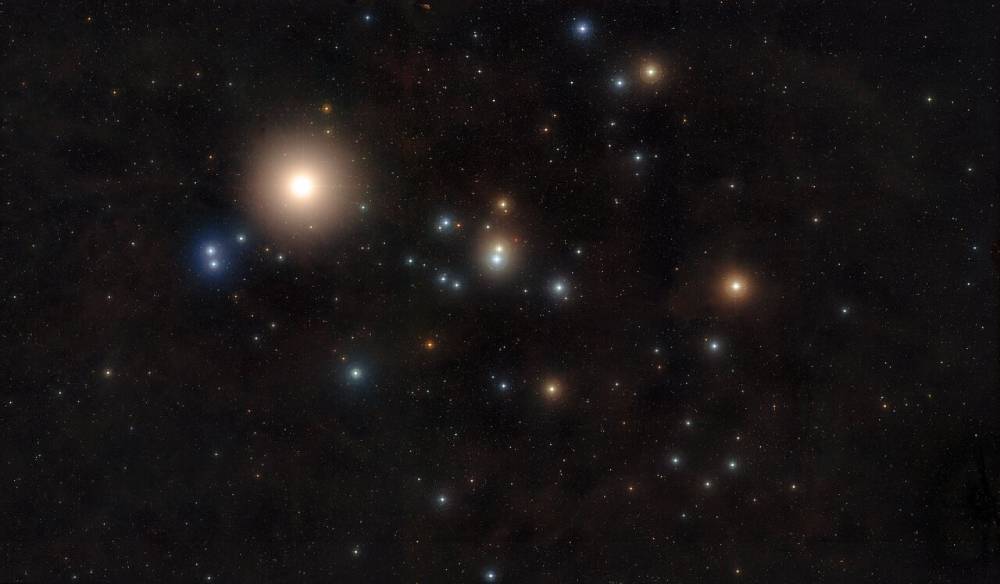The Hyades Cluster, also known as Collinder 50, is one of the closest and most well-known open star clusters to Earth, located just 153 light-years away in the constellation of Taurus (the Bull). It is easily visible to the naked eye and ranks among the brightest celestial objects in this constellation.
The Hyades Cluster has been known since ancient times, with various cultures observing it throughout history. It was catalogued as Collinder 50 by the Swedish astronomer Per Collinder in the early 20th century, who recognized its nature as an open star cluster. This classification has since been confirmed by subsequent astronomers, solidifying its status in astronomical catalogues.
Physical Characteristics
The Hyades Cluster is classified as an open star cluster and contains hundreds of stars. It is relatively young, with an estimated age of about 625 million years. The stars within the cluster are predominantly blue-white, although some cooler, redder stars can also be found, indicating its age. The cluster spans approximately 10 to 15 light-years in diameter, allowing for a diverse range of stellar types.
The relatively young age of the stars, combined with the cluster’s proximity to Earth, makes it an excellent target for studying stellar evolution and the formation of young star clusters. The Hyades Cluster serves as a valuable laboratory for astronomers investigating the life cycles of stars and the dynamics of star clusters.
Apparent Magnitude and Size
With an apparent magnitude of about 0.5, the Hyades Cluster is one of the brightest star clusters visible in the night sky. It appears as a distinctive V-shaped group of stars, with the brightest star, Aldebaran, marking one end of the “V.” This bright orange giant star is not actually a member of the cluster but is often associated with it due to its proximity and location. Through binoculars or a small telescope, the cluster’s stars can be resolved into individual points of light, showcasing its richness and density.

Mythology
Named after the mythological figure Hyas, the cluster has strong ties to Greek mythology. Hyas was believed to be the son of Agenor, and the rising of the Hyades in the sky was associated with the arrival of the rainy season, making the cluster significant for agricultural societies. In some myths, the Hyades are depicted as the daughters of Atlas and Aethra, often symbolizing nurturing and abundance, which further emphasizes their importance in relation to the seasonal cycles.
In addition to their agricultural significance, the Hyades were recognized in Roman mythology for their association with weather changes. Their visibility provided navigational aids for sailors in the Mediterranean, marking them as essential for both land and sea communities. The cluster’s prominent position in the sky has made it a cultural symbol, representing the interconnectedness of nature and human livelihood throughout history.
Observation
The Hyades Cluster is best observed from the Northern Hemisphere during the winter and spring months, particularly from January to April, when the constellation Taurus is high in the sky. Under dark sky conditions, it is easily visible to the naked eye, but binoculars or a small telescope will provide a more detailed view, revealing the cluster’s true nature as a rich grouping of stars.

In the Southern Hemisphere, the Hyades Cluster is also visible, but it appears lower in the sky compared to its visibility from northern latitudes. Observers in the Southern Hemisphere may have a more limited window for observing the cluster, depending on their latitude and the time of year. It can be seen from Australia, New Zealand, South Africa, Argentina, Chile, and Brazil.
Overall, the Hyades Cluster is a beautiful and easily accessible object for amateur astronomers, offering a glimpse into the dynamic processes of star formation and evolution within our galaxy. Its brightness and unique shape make it a favourite target for stargazers and astrophotographers alike.



